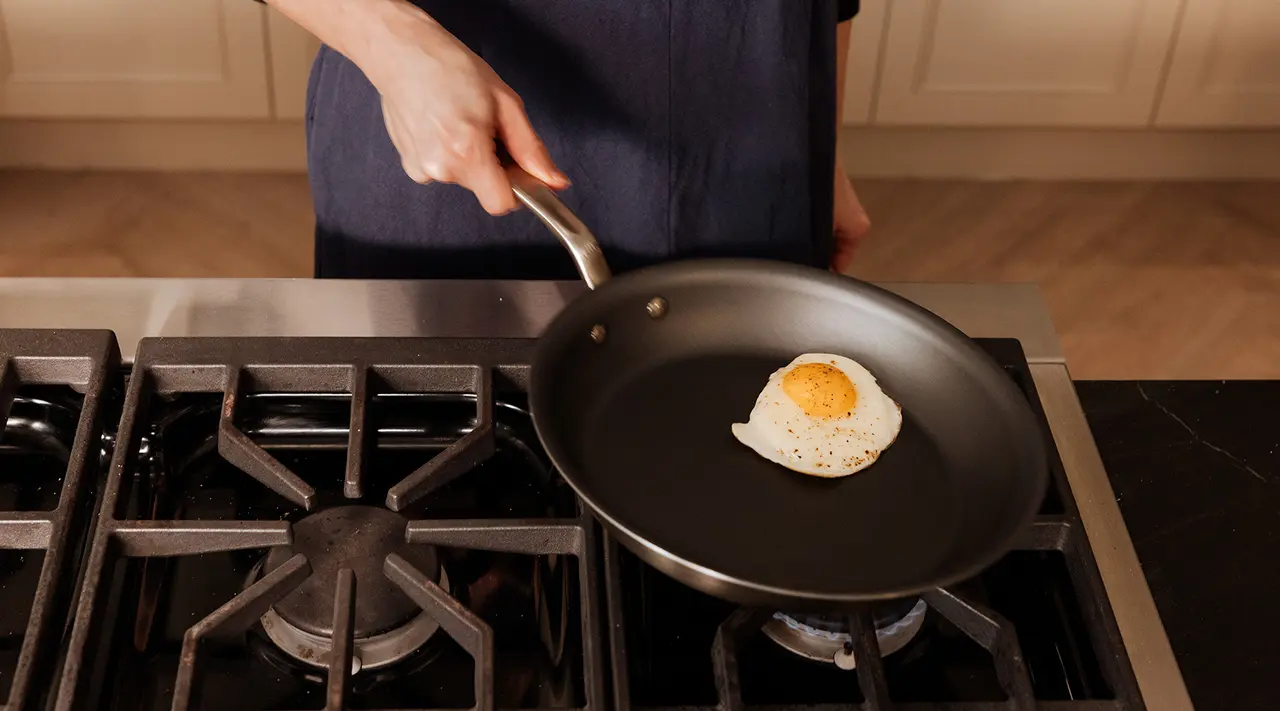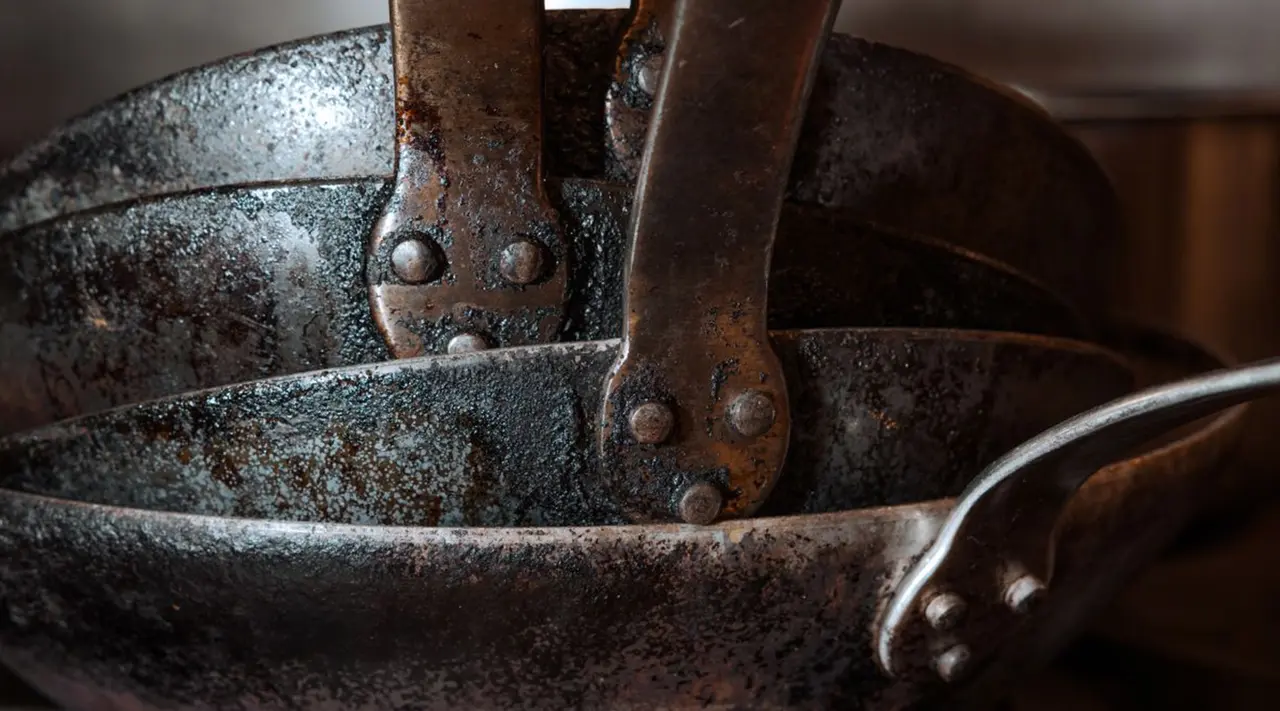Beloved for their easy cooking and cleanup, the one downside of non stick cookware is that it doesn’t last forever. While materials like copper, carbon steel, cast iron, and even stainless steel are built to last a lifetime, non stick pans have a limited lifespan due to their much more delicate non stick coating.
This lifespan varies according to a variety of factors, including how well you care for your pan as well as the type of non stick you own. But either way, all non stick coatings will wear out over time. Below, we’re covering how to spot when this happens—and if there's anything you can do to head it off.
When to Replace Your Non Stick Pan
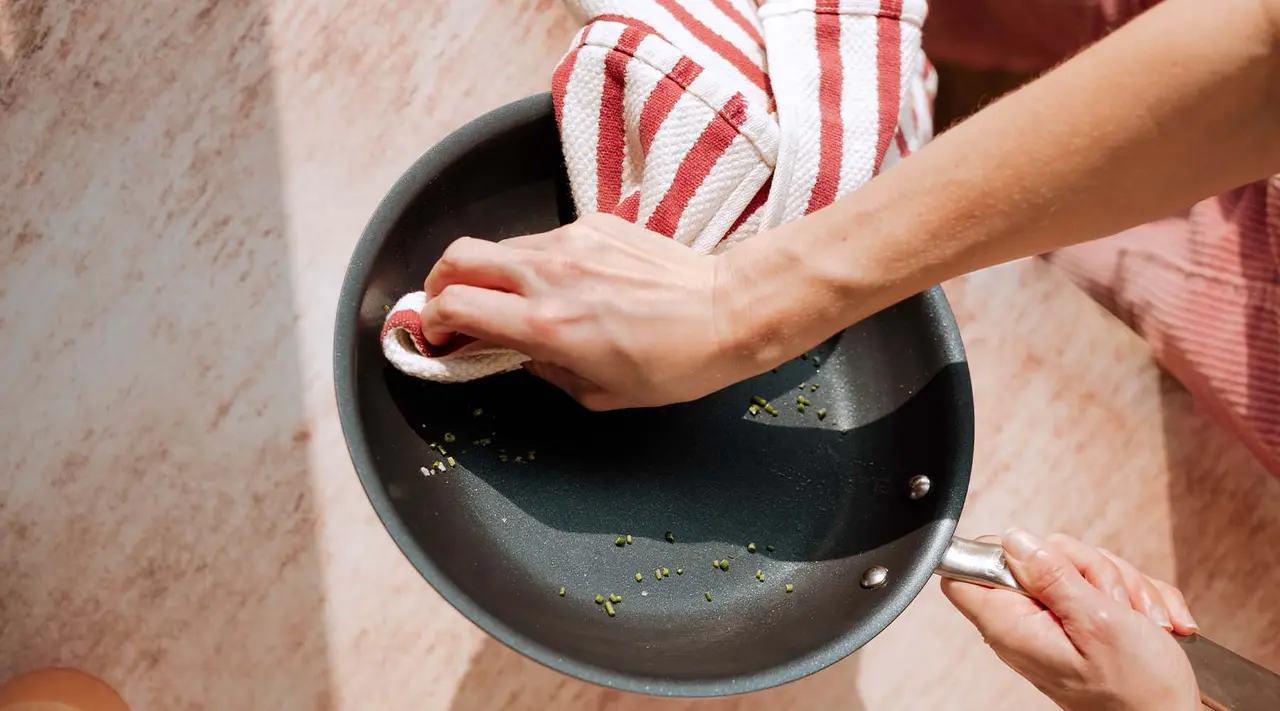
While the exact lifespan of your non stick pan varies based on manufacturer and construction materials used, the following signs are usually a good indication that your non stick pan is on its last legs.
Dark Discoloration
Dark discoloration caused by burning or buildup of residue is a strong indicator that it’s time to replace your non stick pan. While most non stick pans will develop light discoloration over time—especially if the surface of your pan is a light color—deep, dark discoloration is a sure sign that your pan’s coating is wearing out.
While some discoloration is inevitable (especially on light-colored cooking surfaces), you can prevent excessive discoloration by cleaning your pan immediately after it’s been used, sticking with medium-low heat, and transferring food to plates after cooking and not storing food in your pan.
Deep Scratches
Deep scratches on the surface of a non stick pan likely means that the non stick coating has been compromised—a fact that will only continue to get worse. Superficial scratches on the coating happen with use, but scratches that cut through the coating down to the metal beneath can be hazardous to cook on and can harbor harmful bacteria. To prevent these, make sure you use non stick-friendly utensils, clean according to manufacturer recommendations, and store your pan carefully.
Peeling, Flaking, and Chipping
A non stick coating that’s peeling, chipped, flaking, or otherwise damaged is a sure sign that your pan should be replaced. Once the pan’s coating starts to come off, it will only continue to do so, contributing to the loss of its non stick quality—plus, while most non stick coatings aren't harmful to your health, it's never a good idea to ingest foreign substances that aren't edible.
Warping
While not necessarily dangerous, warped pans make for an uneven cooking surface. This means heat will be distributed unevenly throughout the surface of the pan, cooking your food at different temperatures—plus, it won't work on induction cooktops if it's not flush to the surface.
While this generally this won’t impact the non stick performance (and you may even be able to restore some warped pans), higher quality professional-grade non stick is far less likely to warp.
Can Non Stick Pans be Recoated?
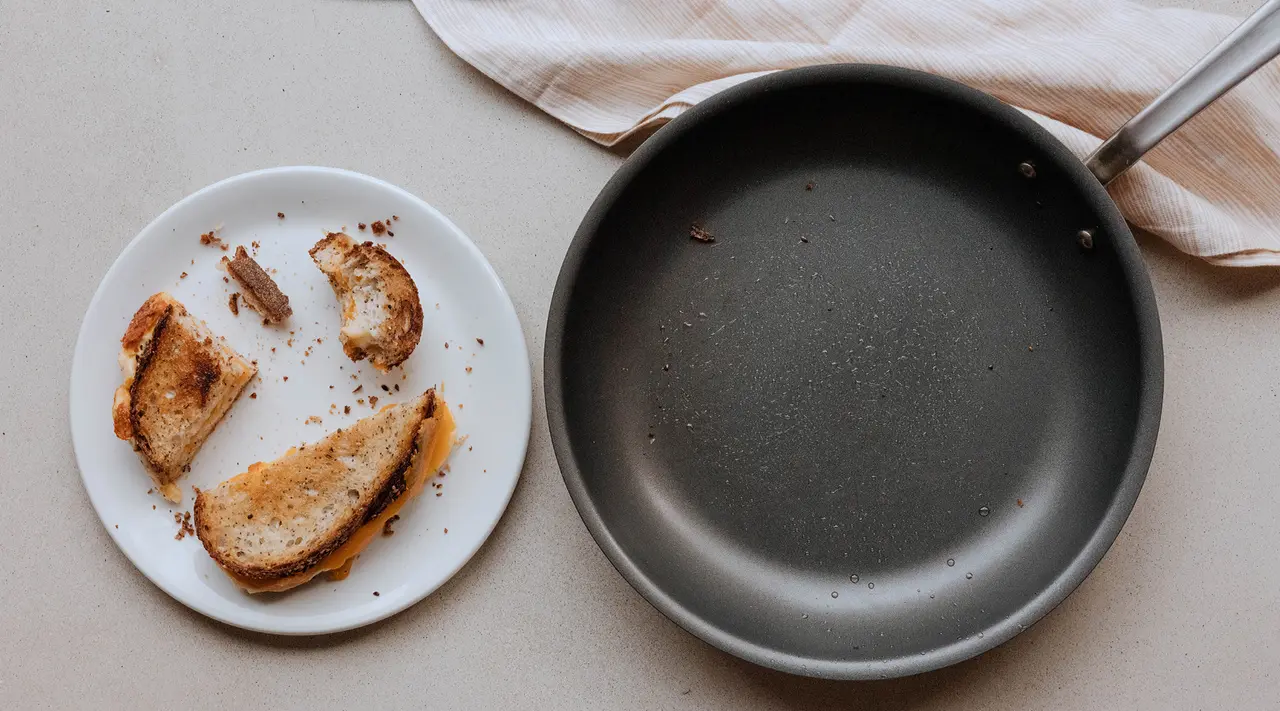
If your manufacturer offers re-coating for non stick pans, then go ahead and take advantage of this service. Be aware that many find it easier and more cost effective to simply purchase a new, high-quality non stick pan rather than have their old pan repaired.
The good news about non stick pans are that, even when the coating is worn out, it's usually still a perfectly usable pan (provided the base isn't warped and the coating isn't chipping, scratched, or flaking off). You can continue cooking on it with a bit more oil or butter as long as the coating remains intact.
How to Preserve Your Non Stick Pans
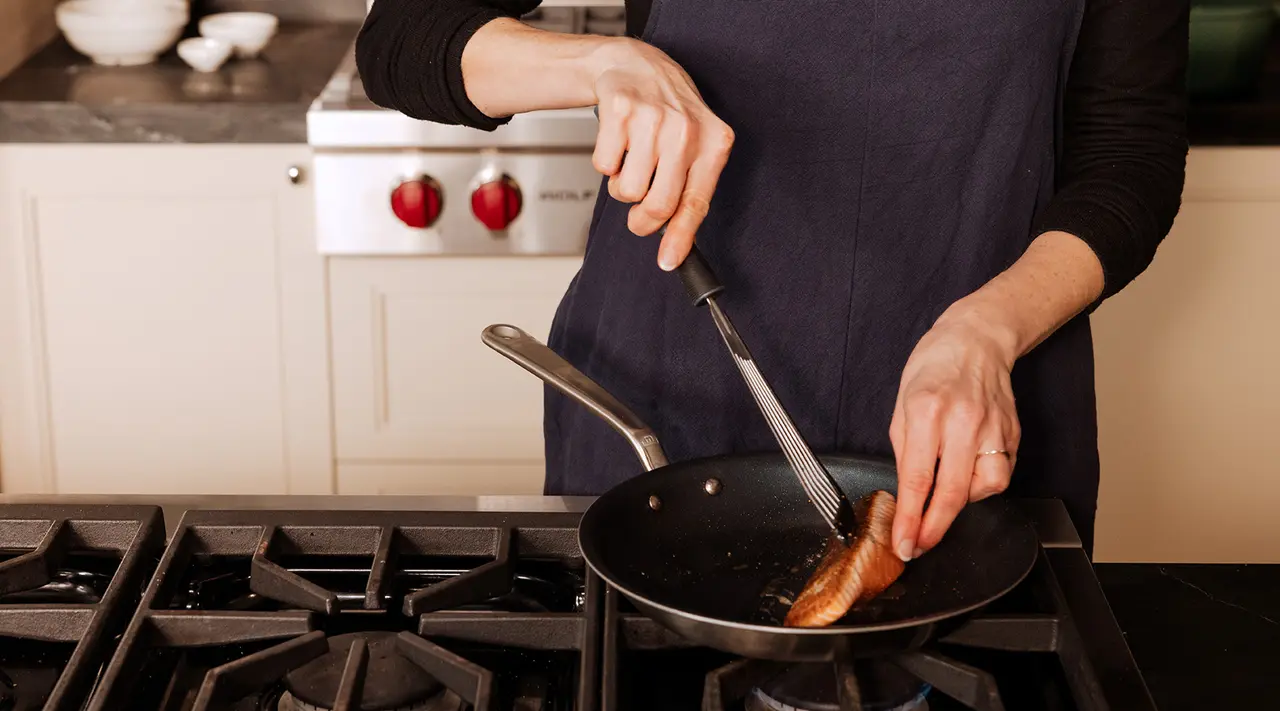
While no non stick pan will last forever, the following practices may help to extend its lifetime.
Use Non Stick-Safe Utensils
To avoid damaging the surface of your pan, use wooden, silicone, or other non stick-friendly utensils rather than metal ones while cooking. This will decrease the risk of potential scratching.
Avoid Abrasive Sponges
Along the same vein, avoid abrasive sponges (like steel wool) when cleaning the surface of your non stick pan. While it can be tempting to use something more aggressive than a dish sponge to remove a particularly stubborn piece of burnt food, stick with soft-side sponges to avoid accidental scratching.
Don’t Expose Non Stick to High Heat
Constant exposure to high heat—both when cooking or in the dishwasher, neither of which we recommend—can cause your pan’s non stick coating to degrade or even start to peel off. We advise sticking with medium heat or below to extend the lifespan of your non stick pan.
High-quality pans will ensure even heat distribution regardless of stovetop temperature, so you don’t have to crank up the heat to ensure your food is thoroughly cooked. For example, our ProCoat Non Stick Collection is oven-safe up to 500F but should rarely need to be used over that high of a temperature.
Store Properly
The coating of a non stick pan can be compromised both on or off the stovetop, with one of the biggest offenders being improper storage. Stacking your non stick with other cookware without anything between the pans, like a Pan Protector, dish towel, or trivet, can cause scratching, chipping, or other damage to the delicate coating that can speed up the process of it wearing out.
Shop High-Quality Non Stick
Another way to preserve the lifespan of your pan is to shop for high-quality non stick made of long-lasting, durable materials, like our ProCoat Non Stick Collection. While these won’t last forever, they'll outlast cheaply-made competitors.
Ready to Cook?
While non stick pans make for a great addition to any kitchen, they will need to be replaced eventually—such is the reality of any pan with a coating. If you’re in need of new non stick pan, we recommend checking out Our ProCoat Non Stick Cookware. Featuring an Award-Winning Stainless Clad construction, these chef-approved Non Stick Pans are finished with two layers of professional-grade coating that results in a high-performing tool trusted by chefs and home cooks alike (yes, chefs really do cook with our ProCoat!).
